I'm trying to use a high side PFET to drive a load (50 Ω below for example, but actual case is a 200 mA motor). I know that I can use a low side NFET but that is active high, and I want to use active low in my 3.3 V TTL (with a single part). For context, I'm trying to use a PCF8574 to switch a load, which is active high at power on.
Edit: If not possible to reduce the part count, perhaps I can reduce the complexity or cost. E.g. Andyaka's suggestion in the comments to use a Zener diode.
I'm able to turn the PFET off by using an NPN to drive the gate up to 10 V, but I'd like to use a single part if possible. Being familiar with NFETs, I tried driving the PFET gate to 3.3 V, but that didn't turn the PFET off (I'm still trying to understand PFETs, hence this question). I see that you have to drive the gate all the way to 10 V to turn it off. I read the datasheet, and \$Vgs(th)\$ is -1 V to -3 V, which I don't understand.
I suppose I could also use an NFET to drive the PFET instead of the NPN below, and in this case maybe that's what a complementary PFET/NFET IC is designed for? If so, that'd reduce it to a single part. Is that the best way to keep my part count to 1 and achieve active low?

simulate this circuit – Schematic created using CircuitLab


